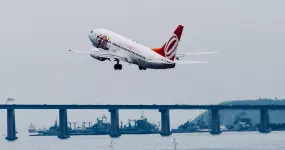Transport Visibility in B2B: challenges and solutions
Published on 24 November 2020

The Supply Chain is faced with many and varied challenges such as accelerating flows, trade globalization, cost reduction goals, urban mobility, and multimodality. In this context, transport serves as an essential method of gaining customer loyalty to the company’s image, in both B2B and B2C. To overcome these challenges, companies can no longer go without real-time visibility of their transport operations- but how can they meet this requirement? Reviewing the obstacles and solutions allows for greater end-to-end transport visibility.
Visibility: a new challenge for global transport
An increased awareness of the importance of B2B visibility
Favored by e-commerce in B2C, the heightened visibility expectations for transportation now extend to B2B as well. According to a study conducted by Generix Group in partnership with the Institute of Commerce1 in February 2020, 31% of French companies see real-time visibility as a key solution to keep the promise made to customers.
End-to-end visibility of the logistics chain enables companies to:
- Quickly take note of irregularities;
- Be more agile in addressing them;
- Anticipate problems to encourage decision-making.
Once alerted of a delay or obstacle early enough, professionals can reorganize accordingly and thus limit its impact on their business. This is why companies have heavily invested in appointment-booking tools in recent years.
A large disparity in equipment between countries
Regardless of the means of transportation used (road, sea, air), flow visibility is now widespread in the United States. Nearly all U.S. carriers have equipped themselves appropriately in less than two years, in part because they refuse to be subcontractors.
The situation is entirely different in Europe where subcontracting is advanced. The countries of the European Union have therefore invested differently in tracking solutions. If Portugal stands out as an example, information systems are far from being widely integrated in Europe, and vehicle equipment levels are inconsistent. According to a study on transport visibility conducted by Generix Group and the Institute of Commerce in June 20202, only 23% of B2B companies offer traceability services in France.
What solutions ensure transport plan visibility?
Aside from WMS (Warehouse Management System) and TMS (Transport Management System), other systems ensuring end-to-end visibility can be used to collect transportation-related information.
Advantages of a collaborative platform
Collecting data from different players in the Supply Chain is essential to keeping the customer informed of their order status. If products are stored by the supplier, the distributor must be able to access available inventory levels. On the other hand, orders and delivery times given to customers must be communicated in real time to suppliers. This visibility of stock can be ensured through a collaborative platform.
With the collaborative portal, the supplier can also trace data concerning order preparation and shipment. Through a connection with the service provider and carrier’s logistics solution, the loader tracking platform can be supplied with delivery information. Regardless of the carriers used, the distributor can follow the progress of each order from a single platform. If a problem arises, they can also be alerted to resolve the issue and inform the client as needed.
Benefits of Yard Management
Increased volumes and delivery frequencies can lead to on-site traffic jams and difficulties loading on the docks. In addition to blocking the movement of goods, this hindrance to both human and material resources can have consequences throughout the entire logistics chain.
Moreover, within the global Supply Chain there are two integral players whose field constraints are totally different: the manufacturer and the carrier. The flow of information from each of these must be synchronized so that transportation is guaranteed on time and production is never slowed or halted.
Yard Management Systems (YMS) optimize costs related to:
- Administrative management of carrier appointments – this involves having extensive working hours and optimal staff availability;
- Shipment organization – respect for the arrival and departure times of carriers, increased operator productivity on the docks, and better management of load processing...
Thanks to an event recording and time-stamping system, Yard Management solutions are now increasingly being used by companies. In particular, they measure the quality of service and the performance of various stakeholders:
- Punctuality, compliance with safety and cleanliness protocol for carriers;
- Emphasis of wait times on shipping site.
Shaken by new challenges, the logistics sector is now looking to improve its transport operations and to better manage the flow of goods, costs and order processing times. In this context, TMS, YMS and collaborative platforms serve as excellent catalysts for change. Want to learn more about these solutions to increase visibility of the logistics chain and transport operations?



